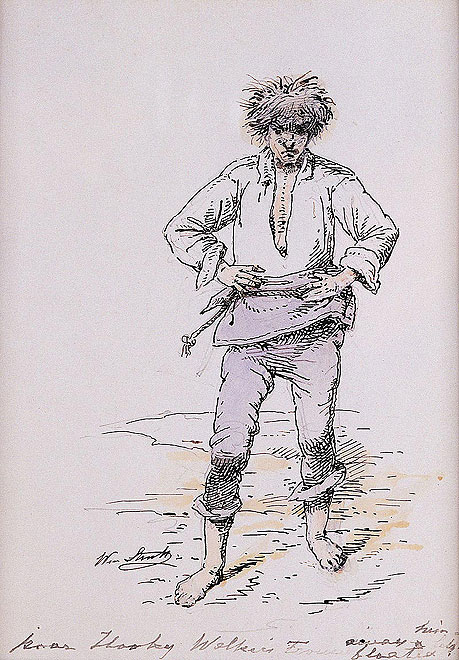Born into an artistic family, William Strutt had his schooling at Jersey and, later, in Paris. In 1838, he entered the atelier of Michel-Martin Drolling, a pupil of the great neo-classicist painter Jacques-Louis David. In 1839, Strutt was admitted to the École des Beaux-Arts, where he was attracted by the work of the orientalists and was taught by one of them, Horace Vernet. He disliked England and, in 1850, after various jobs as a copyist, he booked a passage for Melbourne. Here he delighted in the ‘pure and searching light’ and worked as a painter and engraver.
Marrying in 1852, he took his wife and one child to Whakatū Nelson in 1855. He remained in Aotearoa for a year, mostly based in Taranaki, where he purchased a bush property between the Henui and Mangorei Rivers. There, he built a ‘whorry’ (whare). In Ngāmotu New Plymouth, he sketched Māori, mostly ‘the grim old and tattooed specimens’, and also favoured subjects in which those he depicted were involved in some strenuous activity.
In sketchbooks now in the Alexander Turnbull Library, Strutt accumulated material for historical compositions. All subjects are observed with analytical skill. In 1856, he visited Tāmaki Makaurau and it appears that soon afterwards he sold his tools and his land and returned to Melbourne, where he was a founding member of the Victorian Society of Fine Arts. In 1862, he left for England, settling in Sussex, where he painted subjects related to history and classical mythology.
Date of birth
03 July 1825
Place of birth
Teignmouth, Devon, England, United Kingdom
,
Date of death
03 January 1915
Place of death
Wadhurst, East Sussex, England, United Kingdom
,


